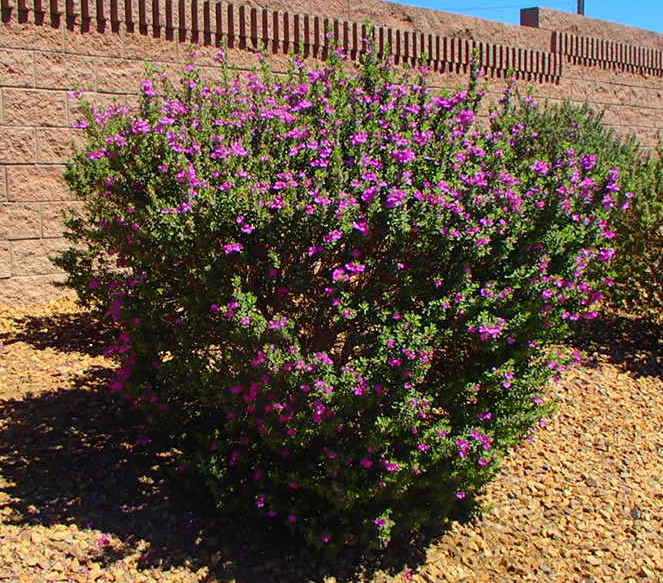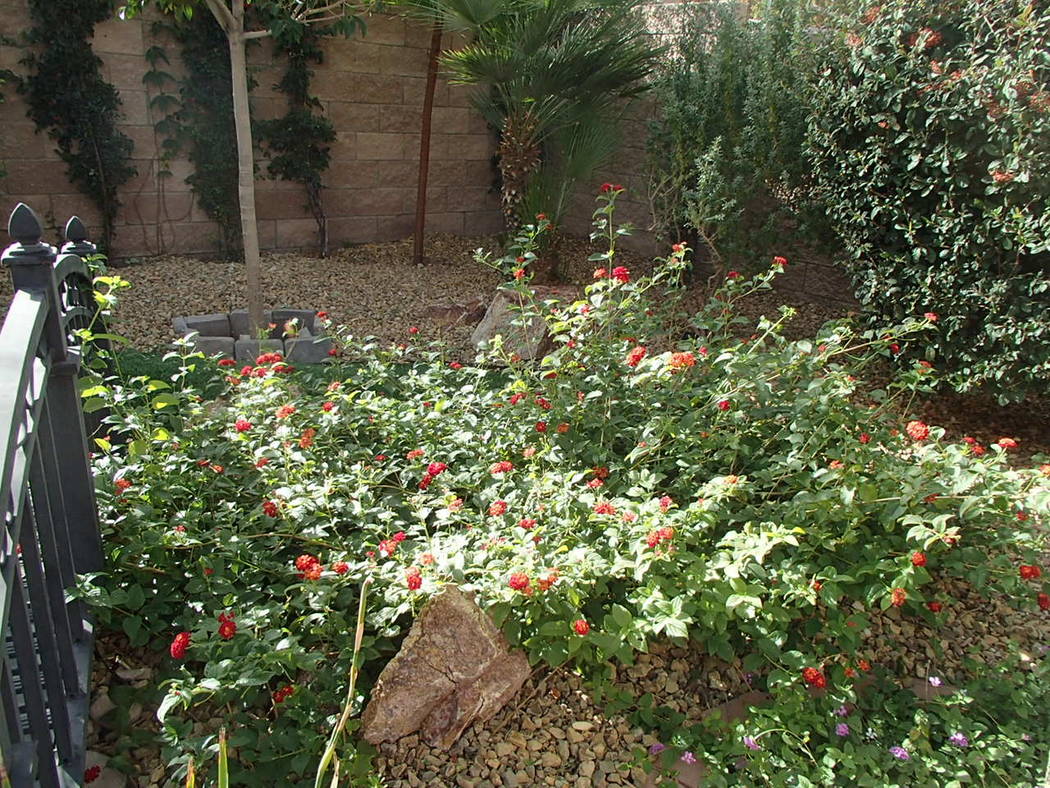Ground is warm enough for planting
Q: I recently purchased some Green Cloud Texas rangers from a building supply store and was wondering if it is safe to plant them now since our weather is turning colder.
A: Since you emailed this question to me it froze in parts of the valley this past week. But not to worry. This kind of weather can be freakish this time of year. It normally does not freeze until the second week of December. But the ground is still warm.
After you plant, you want the roots to grow, but you should not care about the top growing yet. The best planting time for woody plants is from late September until mid-November. You can still plant at other times, but it’s just not as good because of root growth.
The ground is still warm enough to plant. The magic number for landscape plant root growth is about 50 degrees. Of course, roots of plants grow faster in warmer soils, but they will still grow at 50. The ground never froze or was even close to freezing. The soil temperature rises up and down mimicking the air temperature, but these temperature swings are much smaller compared with air temperatures.
For instance, in some areas vegetables such as tomatoes, peppers and squash froze, but the ground never did. The soil in the ground was much warmer than the air.
If you want the soil to warm up fast, then keep it dark, fluffy, dry and in the sun. Those kinds of soils have wide temperature swings from very warm to very cold but still not as cold as the air.
Landscape plant roots like to grow in those warm temperatures during the day. Soils that are not fluffy, wet and instead are covered by a surface mulch or in the shade stay cooler and don’t swing up and down as much.
Surface mulch keeps soils warmer in the fall and cooler in the spring.
Q: I have a 10-year-old Bartlett pear tree and the pears are kind of small, about 3 inches long. The label says they ripen in August, but mine do not ripen until the end of October or November. I pick them, leave them out in the kitchen and they become juicy and ripe. I water the trees heavily once a week and the fruit improves. Is there any way to make the tree produce larger fruit?
A: Bartlett pear has the potential here for getting the same size as in the stores with the same or better quality. It is a matter of how many fruit there are compared with the number of leaves. If there are a lot of fruit and not enough leaves to support the fruit, the fruit will be smaller.
For Bartlett pear, you should have about 45 to 50 leaves for each piece of fruit, so that they can get larger. The fruit is produced on spurs that form an average of five fruit per cluster. Remove all but one fruit per cluster when the fruit has recently set and is still very small. That might be hard to judge when the fruit is just starting out in the spring, but try removing all but one of the fruit in each cluster.
If you want the fruit larger, next year remove more. Do it when they are small. Don’t wait. The remaining fruit will get larger. This is called “thinning the crop” or just plain “thinning.”
Fruit also needs water present to expand and get big when its growing. Make sure the tree gets adequate water while the fruit is enlarging. If the tree doesn’t, the fruit will not grow as much.
I don’t know if you’re watering is often enough or not. But in midsummer I would guess the trees should be watered deeply two or three times a week. Once a week is good in the fall when it cools off.
Pick Bartlett pears when they are still green, but the green has changed from dark green to light green. Your label is wrong. Harvesting should be in about late September or early October, not August.
If you aren’t sure, pick one and cut it open to look at the seeds. If the seeds are all brown, then go ahead and pick them. Picking might last two weeks as they don’t all get ready to pick at once.
Pick the fruit before they turn yellow because that keeps the fruit texture buttery instead of gritty. Then let them ripen in a cool place out of the sun until they are ready to eat in a few days. When you get them from the store, they are sometimes green. Ripen them like that before eating them.
Q: I have two desert ironwood trees that are 10 years old, 12 to 16 feet tall, in my landscape. A nursery told me I should water these trees deep daily for seven to 10 days. I did that, and after the third day the leaves turned a pale yellow and fell off to the touch, so I have stopped watering. The soil moisture meter I use is showing 7 to 8. Any thoughts because I really don’t want to hurt these beautiful trees.
A: When you call these trees “desert ironwood,” I am guessing you mean the ironwood native to the Sonoran Desert. It’s a beautiful native desert tree that does not need to be watered very often. It is considered an indicator tree for growing citrus, so during cold weather in Southern Nevada, it might get damaged. There are other trees called ironwood as well.
Because it grows in the desert, it is not used to getting water very often. When you water this tree, irrigate the area under its canopy to a depth in the soil about 18 to 24 inches. Then don’t water again until the soil dries out.
Because it’s a desert tree, it will not like wet soil but soil that occasionally gets wet. That’s why the leaves are yellowing and falling off: Watering is too often and the roots are suffocating.
On the soil moisture sensor or meter that you have, the needle should be in the 3 or 4 spot before you water again. The meter reads zero to 10 with 10 being sopping wet. You want the soil to be on the dry side about 6 inches deep, not the wet side when you water it again.
When you do water, try a hose, an inexpensive sprinkler that screws onto the end of the hose and a mechanical timer that shuts off the water. If you are like me, I forget to turn it off. The mechanical timer will shut it off for me.
Set it for one hour. Take a length of rebar and stick it into the ground in three places and make sure the water got to the right depth. If the water isn’t deep enough, then water for 15 minutes more.
Q: I am looking for plants that bloom all season long like lantana. Can you help me?
A: I would rather that you use a searchable plant database online like the one created by Southern Nevada Water Authority. It’s a good one.
Google or use your favorite internet browser and type in “find plants SNWA.” The Sunset Zone for Las Vegas is Zone 11. The rest of the information needed for the database should be straight forward. Use this before you go to the nursery and get a list of plants that you want.
If you want plant selection advice from me, ask for five suggestions at your nursery, and then I can help you pick which might be best. There is a lot of information available to help you decide. Select trees and shrubs that you cannot afford to lose using a minimum winter temperature of 20 degrees. If we have a few warm winters in a row, then you won’t lose anything.
If you select plants that tolerate winter temperatures above this temperature, then expect to lose them occasionally during cold winters. Even at 20 degrees, we will have 30- to 50-year freezes that will get as low as 12 degrees. If the 20-degree plants are established in the landscape well before that, they will probably survive.
Q: I made a couple of raised bed planters for tomatoes and peppers and currently have garlic, spinach and lettuce growing. Would adding worms to the soil help?
A: Worm benefits far outweigh any feeding damage they do to plant roots. I know I will get some heat for saying this, but earthworms can create some damage to small plant roots. Just like ants can carry away seeds that you plant. Too much of a good thing can be too much.
If you do add some earthworms to your garden plot, you don’t need to add many. They multiply quickly when organics and moisture are present. The addition of compost to raw desert soil and growing plants in it is usually enough. I will see earthworms in soils that I amend and cover with wood chips in abundance the first year after planting. Adding worms to your soil will speed up what will occur naturally.
Bob Morris is a horticulture expert and professor emeritus of the University of Nevada, Las Vegas. Visit his blog at xtremehorticulture.blogspot.com. Send questions to Extremehort@aol.com.



















